-
Really excited to dive into this. I like that they had the courage to pick Donkey Kong Country 2: Diddy’s Kong Quest for 1995—the rare sequel that’s better than its predecessor; and imo, the SNES game that holds up better than any other. That music!

-
🌺 blooming

-
Dragonflies
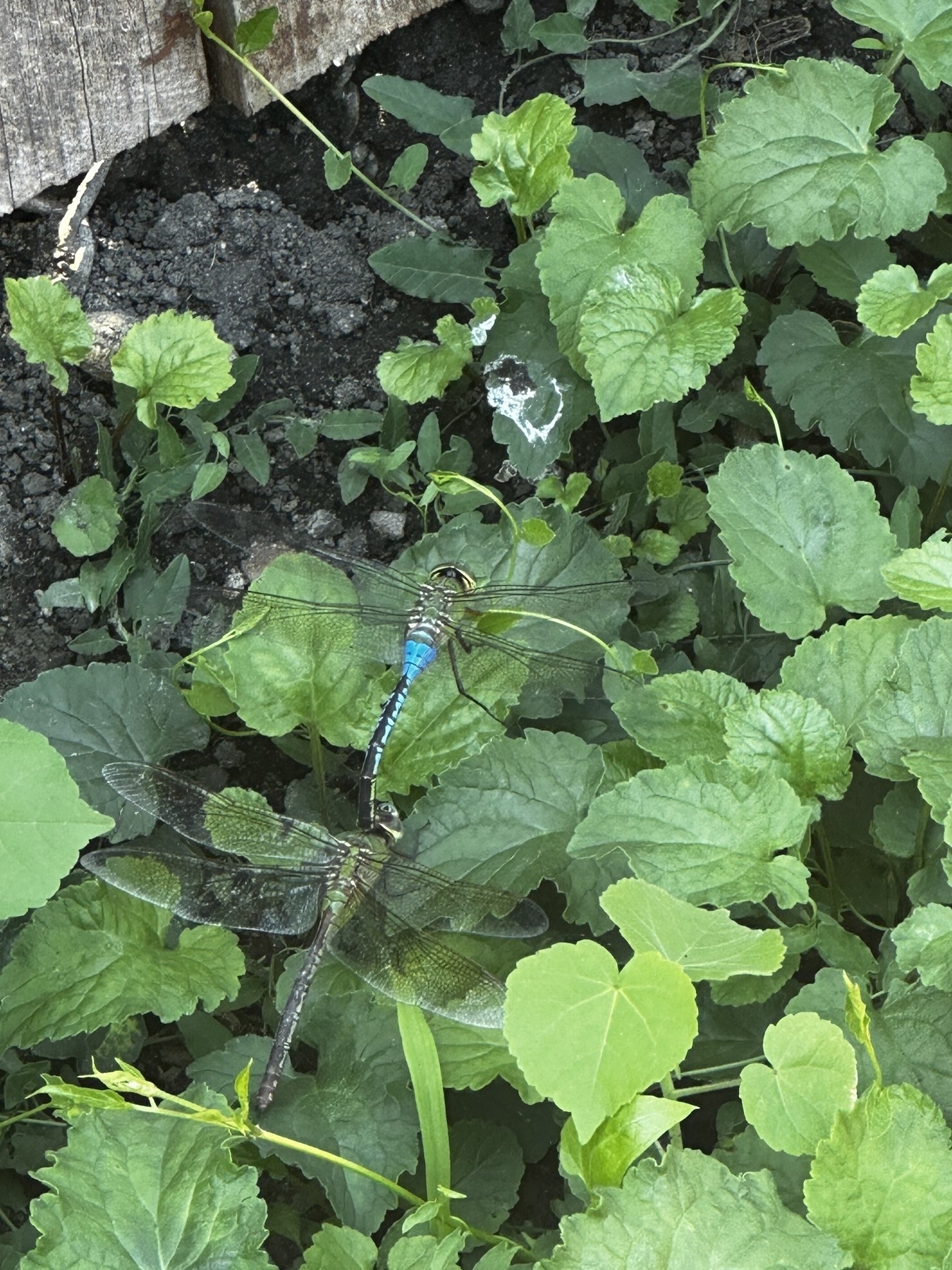
-
Miserable adventures in Threads land
I was among the first few thousand Facebook users 1. Some time in the summer of 2004, my dad 2 emailed me to say that I was eligible to sign up for something called The Facebook as a way of meeting other incoming freshmen at my college. So I became an early adopter of the platform at a time when it was still for .edu domains only.
“The facebook”
That institution had also distributed a physical “facebook” of the class, just as it did physical course catalogs and registration cards. All of these would be retired during my time there, replaced by fiercely proprietary and unfriendly alternatives, but none saw a replacement with the imperial impact of The Facebook.
After signing up via a Dell tower PC, the first person who requested that I “friend” them was an acquaintance—a loose tie, someone I’d been friendly with but not exactly a friend— from a summer camp I’d attended two years earlier in New Jersey. I’d done such camps after each year of high school, and their denouements were always awkward affairs, wherein we swapped email addresses and AIM handles (but rarely if ever phone numbers 3).
It was a ritual with no corresponding reality—I kept in touch with virtually no one, even the people I excitedly exchanged a few emails with before they stopped responding. But now The Facebook promised something far stickier.
Logging into The Facebook in September 2004 let me:
- Do precise search: Type the name of almost anyone I knew from those camps from years ago and I could instantly see everything from what classes they were taking to what music they liked. Moreover, those interests were hyperlinked—you could click say “The White Stripes” and see everyone in your network who also listed them.
- Post on their “walls”: Almost at exactly the time my first classes began, Facebook rolled out the “wall” feature that in its earliest form was like a 1:1 digital equivalent of the dorm room door front whiteboards that everyone at my 2003 summer camp liked to use to relay messages. It was one big canvas that anyone you were friends with could edit.
- Send messages: The Facebook allowed frictionless messaging within the site, like AIM but even better, without the clunky desktop installation. Everything happened in the browser, and it was fast.
I used Facebook 4 almost every day from 2004 to 2014. My peak year was probably 2005, when it combined to be both a class research tool, a dating application, and a way of discovering music and movies. It was the “everything app” before the iPhone made that sort of thing more difficult by encouraging smaller-scale apps.
Until 2006, when the NewsFeed fundamentally changed the experience of using Facebook and the site opened up to non-.edu domains, and 2008, when the App Store launched, Facebook was somehow both super exclusive and boundless in its ambitions. Using it felt like being in on a betting secret—you smiled in the secret knowledge and insight you had, and ironically in the splendid isolation it conferred among your growing network of connections.
Facebook becoming more public from 2006 onward dissipated this aura somewhat, but the inner glow was still so radiant that it was worth staying and posting there. This time all the way through 2016 was what I’d call social media’s “imperial era,” when it seemed like there was nothing it couldn’t replace, that it was immune to any checks on its growth, and that it’d only connect more people with time.
The end of social media’s imperial era
And yet the sun eventually sets on all empires.
My own usage tapered off after 2014 as more of my actual friends left the platform or curtailed their own usage. The platform also became overrun with ads and posts about the 2016 election, the latter a crossed Rubicon not only for Facebook but for all of social media in terms of how even casual people came to perceive it—that is, not as a friendly, fun place to hangout, but as just another flamewar-laden forum akin to the ones it’d replaced.
Indeed, 2016 was the pivotal year that inaugurated our current social era, which is defined by:
- Massive entrenched incumbents floating unsettlingly atop a sea of political turmoil.
- Nonstop “content” consumption that commoditizes both what’s being made and who’s making it to an almost comical degree
- A countercurrent of standardization, led by the W3C, to weave social media into the fabric of the web itself through new protocols such as ActivityPub
No hyperscale or groundbreaking new 5 social network has so far launched after 2016. Both TikTok and Mastodon, which between them embody all three trends above, launched that year and seemingly every new network since has been a variant of one of them:
- TikTok has what Eugene Wei has called a “purity of function as an interest/entertainment graph” aside from any social networking capacity; you can reach millions as a complete rando. Everyone from Instagram to Spotify has attempted to imitate this function by flinging “content” at you with all the immediacy of streaming, but with none of the tedium of having to consume anything in a 30-to-60-minute chunk, all while moving beyond the constraints of the unidirectional following/follower model of Twitter (i.e., you can follow someone without their permission) or the even more restrictive bidirectional one of Facebook (i.e., your “friend” has to agree to your connection request).
- Mastodon was designed as an anti-Twitter: A completely FLOSS 6 implementation of a microblogging service that anyone could install on a server and use to connect to anyone else running the same software. No ads, no post-serving algorithms, no massive centralized server farm—Mastodon almost feels like the early Facebook, before it had any obvious future as a commercial behemoth.
While these two networks were creating new paradigms for what social media would become, Facebook and its far smaller but still-influential counterpart Twitter were coming under unprecedented scrutiny.
The 2016 US presidential election marred both of them permanently:
- Facebook became associated with Cambridge Analytica and with fake ads saying Michael Jordan had endorsed Donald Trump.
- Twitter became infamous as the latter’s preferred communications channel.
Their boomerization and commercialization were complete and with them those transformations, they both became like different types of bars you’d not want to visit regularly. Facebook felt like the site of constant brawls blurred into incoherence and non-reality by alcohol, while Twitter became like a rundown speakeasy, with forbidden and valuable knowledge attainable only by courting risk, not least from the abusive people within it.
Yet these two have proven very difficult to dislodge, because social media after 2016 is not friendly to newcomers, for the following reasons:
- Regulatory scrutiny: Tighter regulations, especially in the E.U., have made the classic social media model of hovering up as much user data as possible to run ads against untenable. Meta, Facebook’s parent, has struggled in the E.U.
- High interest rates: Startups can’t access the capital to build out the infrastructure and footprints necessary to compete with the incumbents on scale.
- Moderation burdens: The chaos of 2016 made the toughest part of social media—moderation, which is in a sense the product of any social media provider, because it determines what you see—even tougher as platforms had to decide how to handle contentious content.
- Network effects: Facebook (2004) and Twitter (2006) had virtually no competitors when they launched. But today’s new social platforms have to dislodge people from the older sites where they’ve cultivated hundreds of even thousands of connections over the years.
Making a social network after 2016 is sort of like trying to make a desktop-first app after 2008. That was the year that both Dropbox and Spotify launched, with Windows and macOS clients as their main interfaces. Most mass-market apps of their ilk would today never target the desktop first, due to the proliferation of phones since then and the rise of web apps, but some smaller developers still focus on it. 7 In both cases, the people still trying to make it work are playing for a niche audience.
The zombie Threads
Even the hyperscale operators themselves aren’t immune.
Meta launched Threads, its purported “Twitter killer,” on July 5 and the app quickly became one of the biggest sensations in the history of the App Store and Google Play, racking up over 100 million accounts in just a week. For comparison, there are only 14 million total Mastodon accounts, accumulated over 7 years, as of this writing.
On paper, Threads has all the ingredients to vault over the hurdles detailed above:
- It’s built on an existing social graph (Instagram) and as such people come to the platform with a built-in audience.
- It’s backed by Meta’s extensive data center infrastructure.
- It didn’t launch at all in the E.U., thereby avoiding regulatory scrutiny there. Writing off those hundreds of millions of users is something only a company like Meta that has so many other profits centers could afford.
- It’s designed to de-prioritize politics and hard news, letting it preemptively avoid the heat that cooked Facebook and Twitter for a lot of people.
Meanwhile, the parade of other Twitter rivals can’t compare on these particular metrics:
- Mastodon, my favorite of the bunch, isn’t meant to be a commercial colossus and is truly a “start from nothing” experience for a lot of people because it’s both technically daunting and has no system for importing or recommending accounts to follow. Infrastructure and speed vary widely from instance to instance.
- Bluesky is still invite-only, which likely killed any chance it had of soaking up fleeing Twitter users en masse. It’s also a Mastodon ripoff, nominally committed to “federation” that still hasn’t happened and that won’t use the ActivityPub protocol if it does, either. It couldn’t even handle a surge in traffic on July 1, when Twitter briefly DDoS’d itself.
- Substack Notes made it so that you signed up for the newsletter of anyone you followed, meaning you’d have inbox overload pretty quickly. It also has horrible moderation.
- Post.news, Spoutible, and other attempts to make a centralized, commercialized Twitter clone are the most prone of all these options to encountering the post-2016 barriers to traction.
But is Threads good? Reader, it’s not even engaging. It already feels like a dead site, with a confusing UI, algorithmic feed, and heavy censorship. If any platform was going to dislodge Twitter as the favorite tool of the media and influencer classes for text based interactions 8, it was going to be this one, but even it couldn’t make it work!
Moreover, because it’s essentially just another way of interacting with the Instagram graph, Threads feels impossible to break through on for anyone who’s not already famous. There’s none of the DIY almost-meritocratic 9 ethic of Mastodon, where someone who posts funny and useful things can quickly rack up hundreds of followers. No, Threads is not really for you or I (unless you’re, like, Netflix incarnate); it’s for advertisers who wanted out of Twitter.
In her newsletter 10, Mariya Delano described the debut of Threads as “a brand-new social media platform is launched with those old hierarchies firmly rooted in place…The people who already had status on Twitter or Instagram are getting to keep that status.” It’s new, but it feels zombielike, like someone pulled some pre-2016 code out of an old file and refactored it. Low-stakes non-political posts, memes, celebrity “main characters,” highly visible follower counts—it’s all back.
Whereas in recent years the likes of Mastodon as well as the very platform where I’m posting this blog—Micro.blog—have de-emphasized metrics, algorithms, and anything that could turn social media into any kind of competition, that’s all Threads consists of. On Mastodon, I have more followers that many people who tried migrating over from their multi-thousand follower count Twitter accounts, simply because I’ve put in more time than they on the ol' pachyderm platform. Their Twitter clout was worth nothing on Mastodon. But on Threads? I’m no one, while people who barely post at all have infinite followers, because their fame elsewhere ports easily to the platform.
Delano sums it up as a setup that instills an immediate feeling of being an outcast:
When I opened Threads for the first time, my brain reverted to that of a panicked and insecure teenager. Meta’s new social media app made me feel like I was a loser nerd, walking into a new school’s cafeteria. And as always, the popular kids could smell that I didn’t belong.
It’s the same feeling I felt as my own social graph began moving on from Facebook and new ones moved in, seemingly with many more reach right away.
Threads is a zombie, and like a zombie it’ll be hard to get rid of. Meta will keep trying to make it fetch. In his groundbreaking novel Zone One, Colson Whitehead talks about the unusual sight of seeing a zombie out in the wild in a world in which everyone is committed 24/7 to controlling their presence, and this sensation is similar to how I feel seeing Threads dominating the social network landscape like 2016 never happened (emphasis mine throughout):
The skel wore a morose and deeply stained pinstripe suit, with a solid crimson tie and dark brown tasseled loafers. A casualty, Mark Spitz thought. It was no longer a skel, but a version of something that predated the anguishes. Now it was one of those laid-off or ruined businessmen who pretend to go to the office for the family’s sake, spending all day on a park bench with missing slats to feed the pigeons bagel bits, his briefcase full of empty potato-chip bags and flyers for massage parlors. The city had long carried its own plague. Its infection had converted this creature into a member of its bygone loser cadre, into another one of the broke and the deluded, the misfitting, the inveterate unlucky. They tottered out of single-room occupancies or peeled themselves off the depleted relative’s pullout couch and stumbled into the sunlight for miserable adventures. He had seen them slowly make their way up the sidewalks in their woe, nurse an over-creamed cup of coffee at the corner greasy spoon in between health department crackdowns. This creature before them was the man on the bus no one sat next to, the haggard mystic screeching verdicts on the crowded subway car, the thing the new arrivals swore they’d never become but of course some of them did. It was a matter of percentages.
And now I’ll leave you by unpacking how the italicized passages relate to Threads:
- something that predated the anguishes: Threads wants to be a social network from before 2016, when TikTok didn’t exist, Donald Trump was still a fringe figure, and social media was more favorably regarded overall.
- his briefcase full of empty potato-chip bags and flyers for massage parlors: Threads has lots of users, but its posts are mostly junk, nothing I want or need to read—“celebrity posts” as Delano notes, plus lots of meta commentary on the state of different platforms, very little news, lots of recycled jokes.
- stumbled into the sunlight for miserable adventures: It’s new-ish, it’s not Twitter, and that can feel liberating. But the experience of using it feels like a step back to the imperial era of social media, and therein lies a lot of algorithmic misery and disillusionment, e.g. feeling bad that other people’s content is very clearly getting noticed more.
- the thing the new arrivals swore they’d never become but of course some of them did: It wasn’t long ago that many people saw Meta’s sites—Facebook especially, but also Instagram and WhatsApp—as artifacts for Boomers and aging Millennials. All the cool kids were on TikTok or any of the many Twitter successors. And yet many of the once too-cool crowd are now right back on a prime Meta property, posting pictures of their lunch like the Boomers they swore they’d never become.
-
Apparently it didn’t reach 1 million officially til December 2004. ↩︎
-
Boomers got Facebook at a very early stage, presaging its dominance with that demographic. ↩︎
-
Long-distance was still a germane concern. ↩︎
-
It bought its current domains, sans the “The,” for $200,000 in 2005. ↩︎
-
A big carve-out, and for a reason. ↩︎
-
Free/libre and open source software. Such software is free to study and modify as you see fit, as long as you follow its license. However, it might not be monetarily “free,” hence the need for the “libre” to distinguish it from “gratis” software. ↩︎
-
I’m writing this blog from MarsEdit on an iMac, so hell yeah I still believe in boutique desktop software. ↩︎
-
The deeper competition is from TikTok, although I think there’s still a chance it gets banned in the US. ↩︎
-
I think meritocracy is a problematic concept, but we can use it loosely/relatively here I guess. ↩︎
-
Make sure to subscribe! ↩︎
-
Limited Run Games announced it was reissuing the two SNES/NES/Game Boy Jurassic Park games for modern consoles. Here’s a CIB Jurassic Park for the SNES. Notably it has a Dolby Pro Logic soundtrack and can use the SNES Mouse in controller port 2 for certain sequences like the computer terminals.
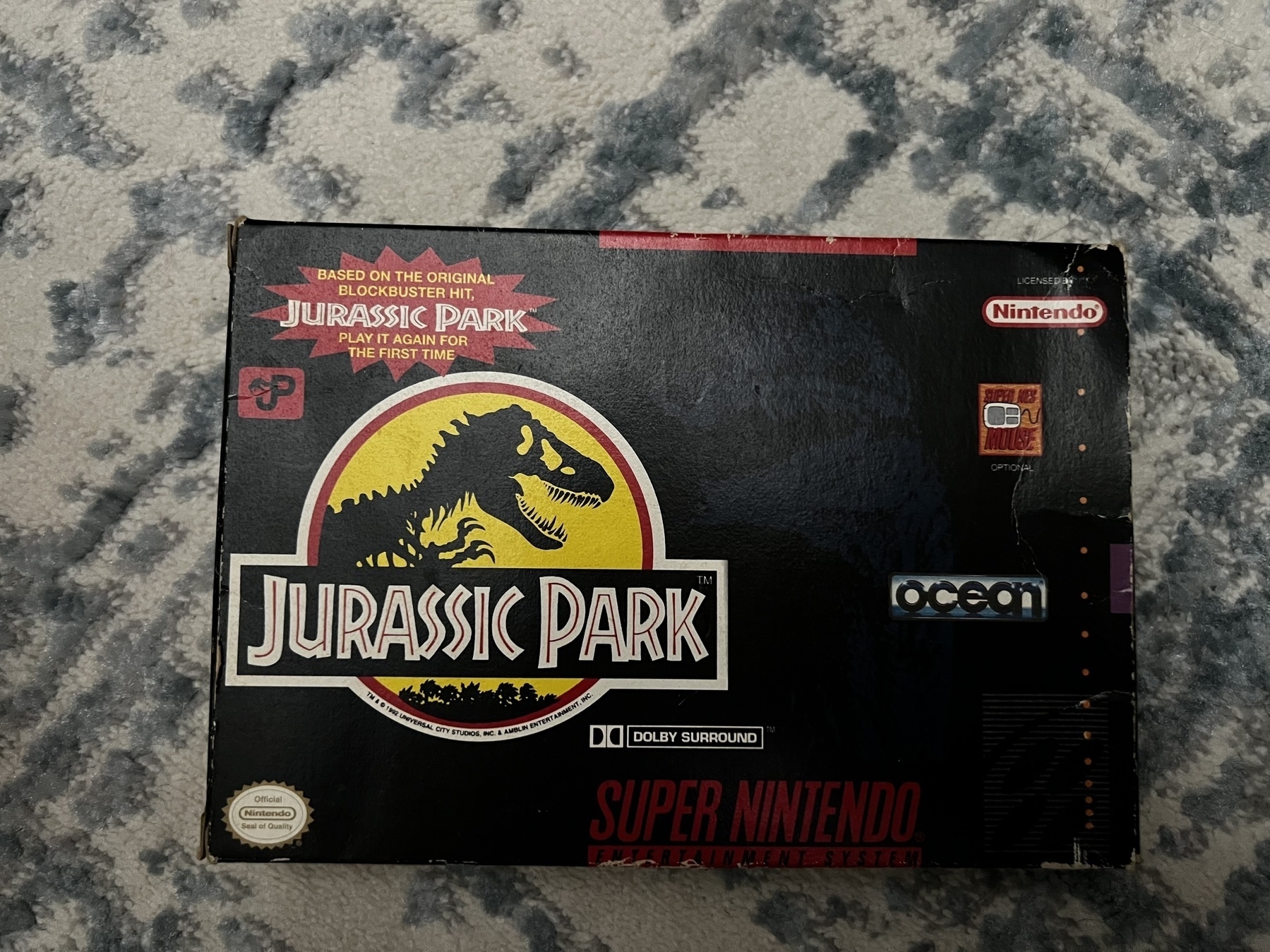

-
My grandpa had a grove of Chinese 🌰 trees. They yielded lots of fruit, and were very compact. In contrast, the near-extinct American 🌰 could grow to 100 feet tall and would’ve still been a common site in his youth in the early 20th century.
-
Same location 30 minutes apart in Lombard, IL


-
🦋 🐝 photos from around the garden

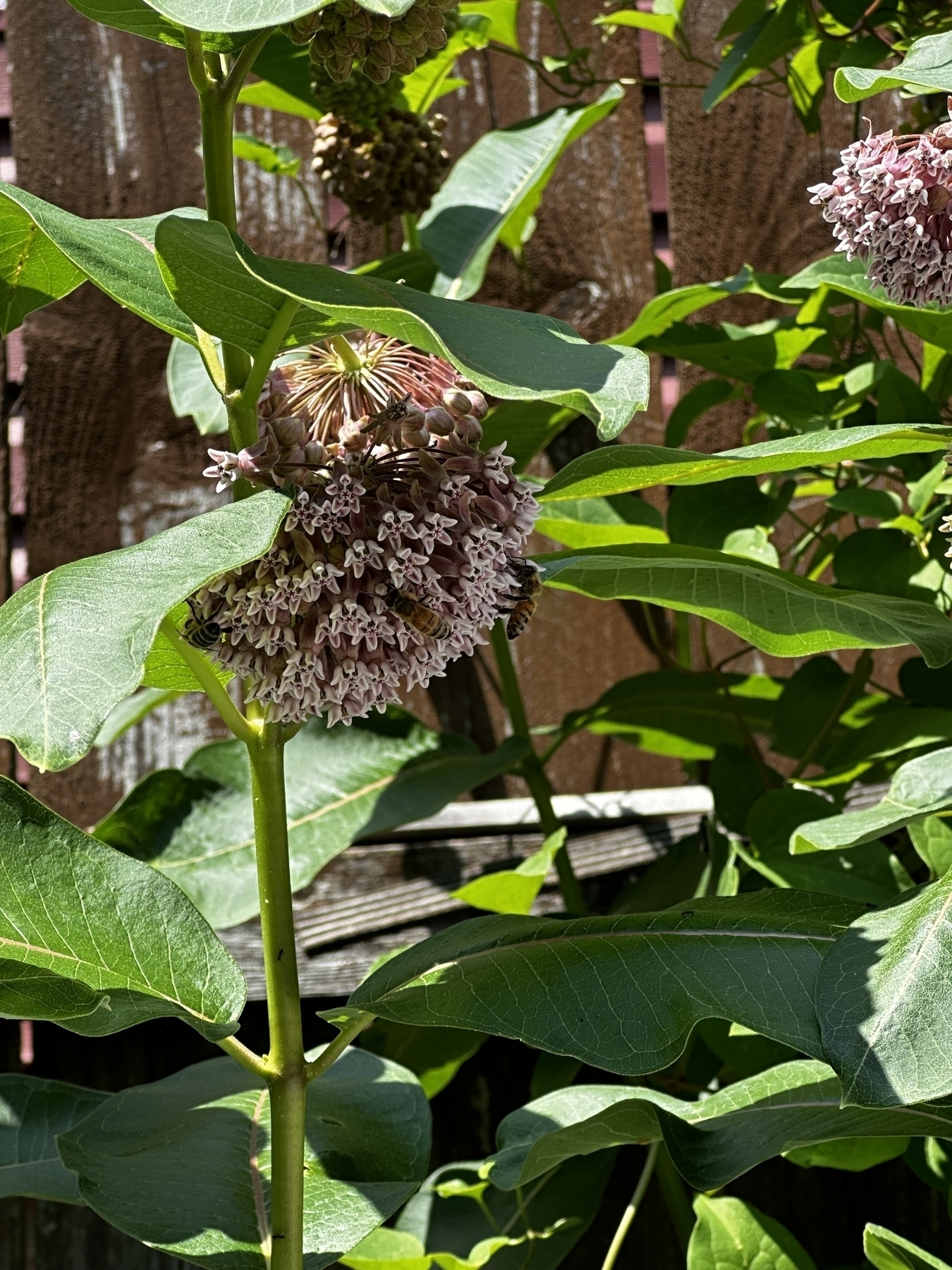


-
Some light reading while almost sweating to death the other day
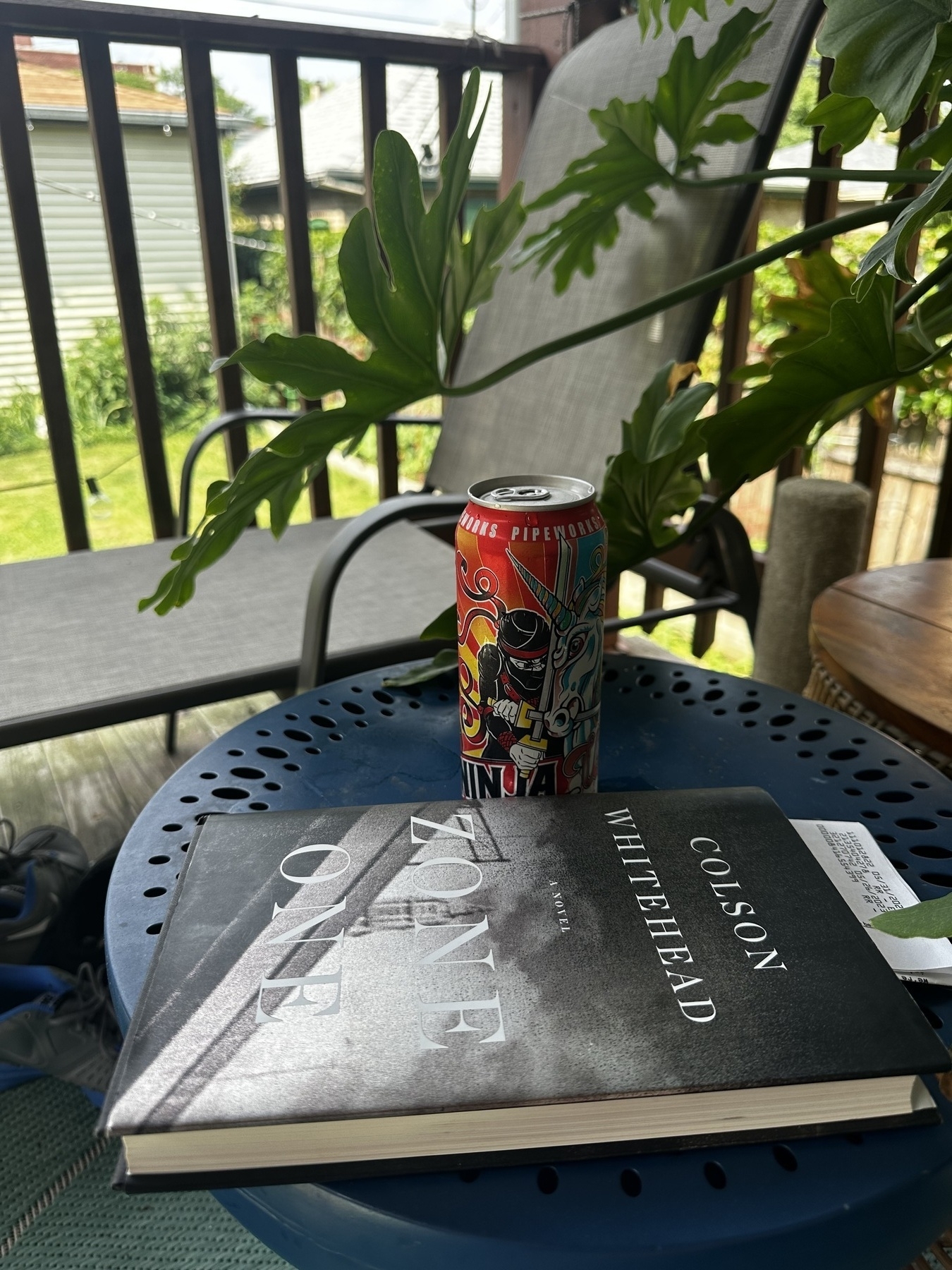
-
Snagged this picture of a monarch butterfly on the milkweed before it flew over to the neighbor’s garden
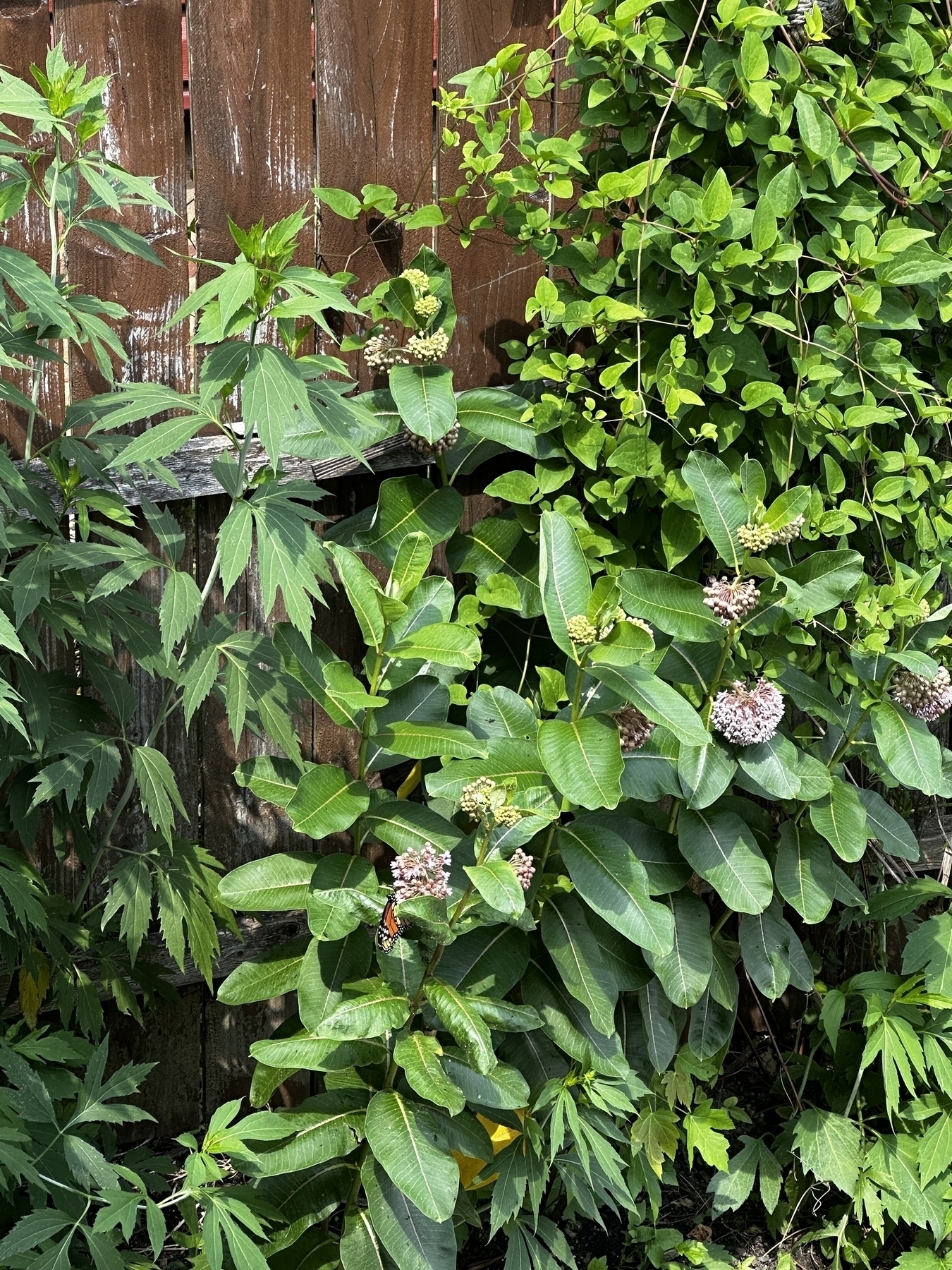
-
Some very KJV-like language from Colson Whitehead in Zone One:
They would force a resemblance upon it, these new citizens come to fire up the metropolis.
Their new lights pricking the blackness here and there in increments until it was the old skyline again, ingenious and defiant.
-
🐝🌸

-
Second painting from yesterday. Super C, 8x10, acrylic on canvas. Name inspired by the NES game of the same name.
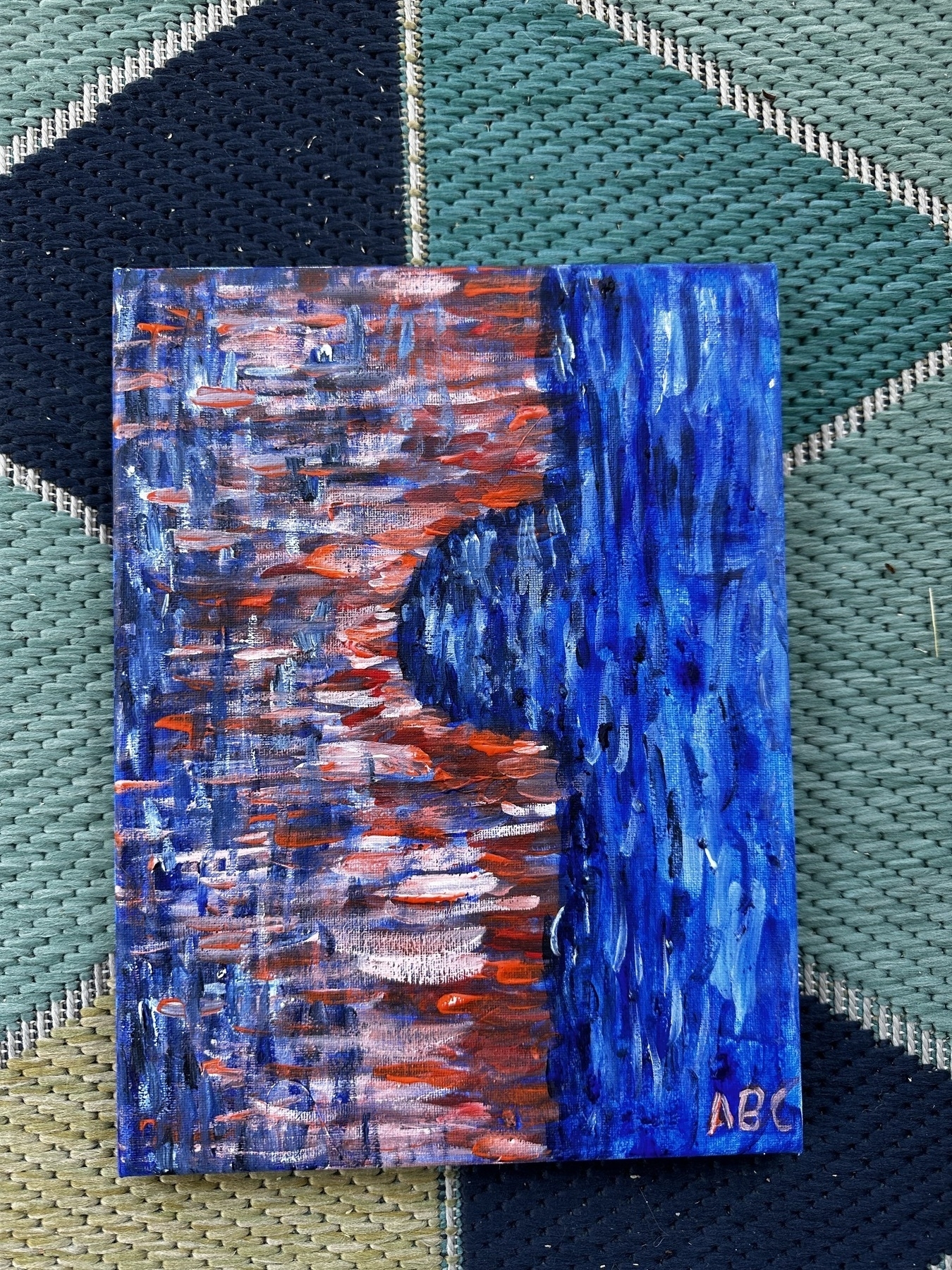
-
First of three paintings I completed today. Lively lemons, 8x10, acrylic on canvas
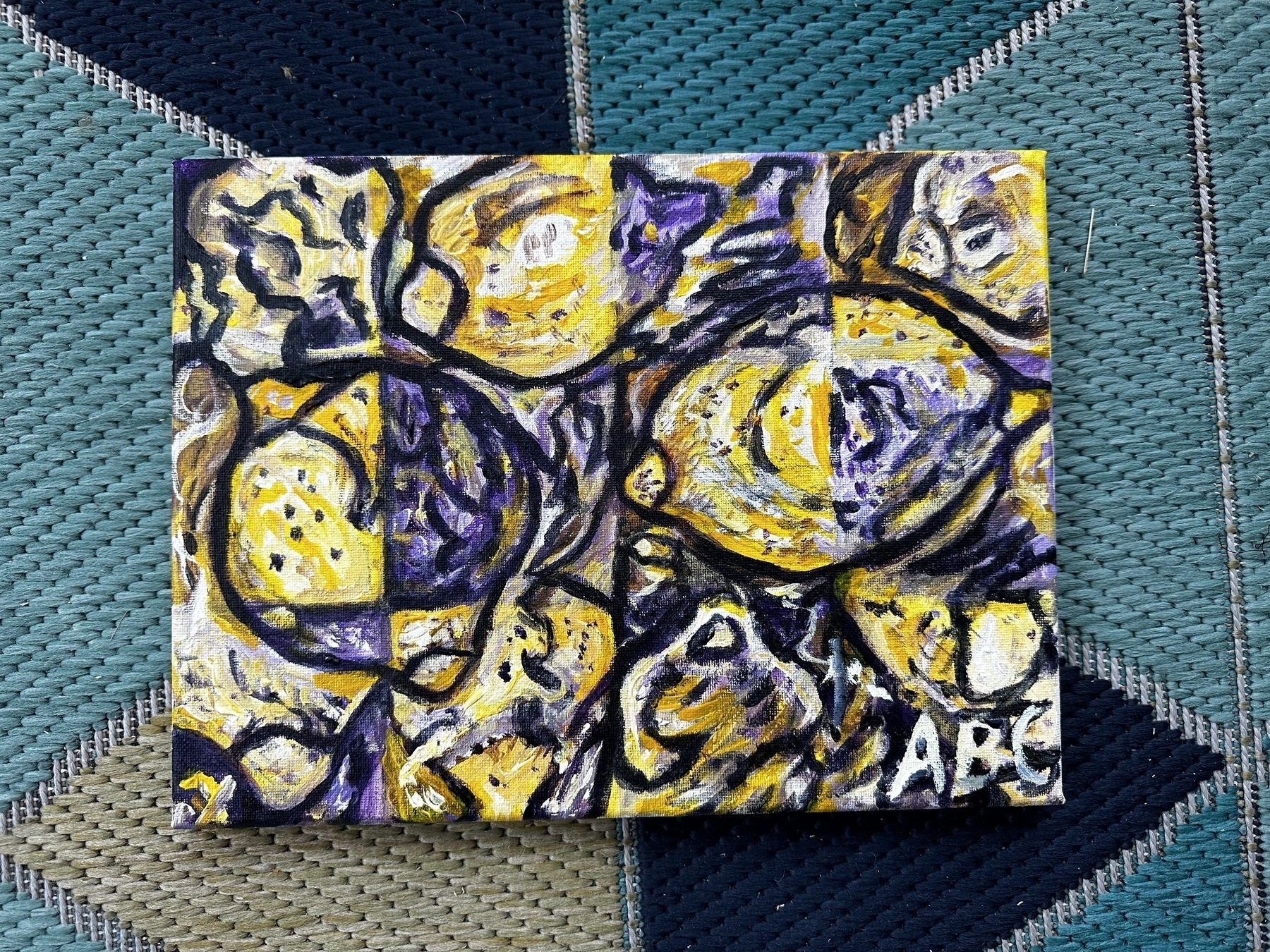
-
Got this Apple Extended Keyboard II the other day and it’s a joy to type on, with lots of travel and a productive-sounding thump with each key press. It’s connected via an Apple Desktop Bus-to-USB-A dongle that in turn connects to a USB-A-to-USB-C dongle.

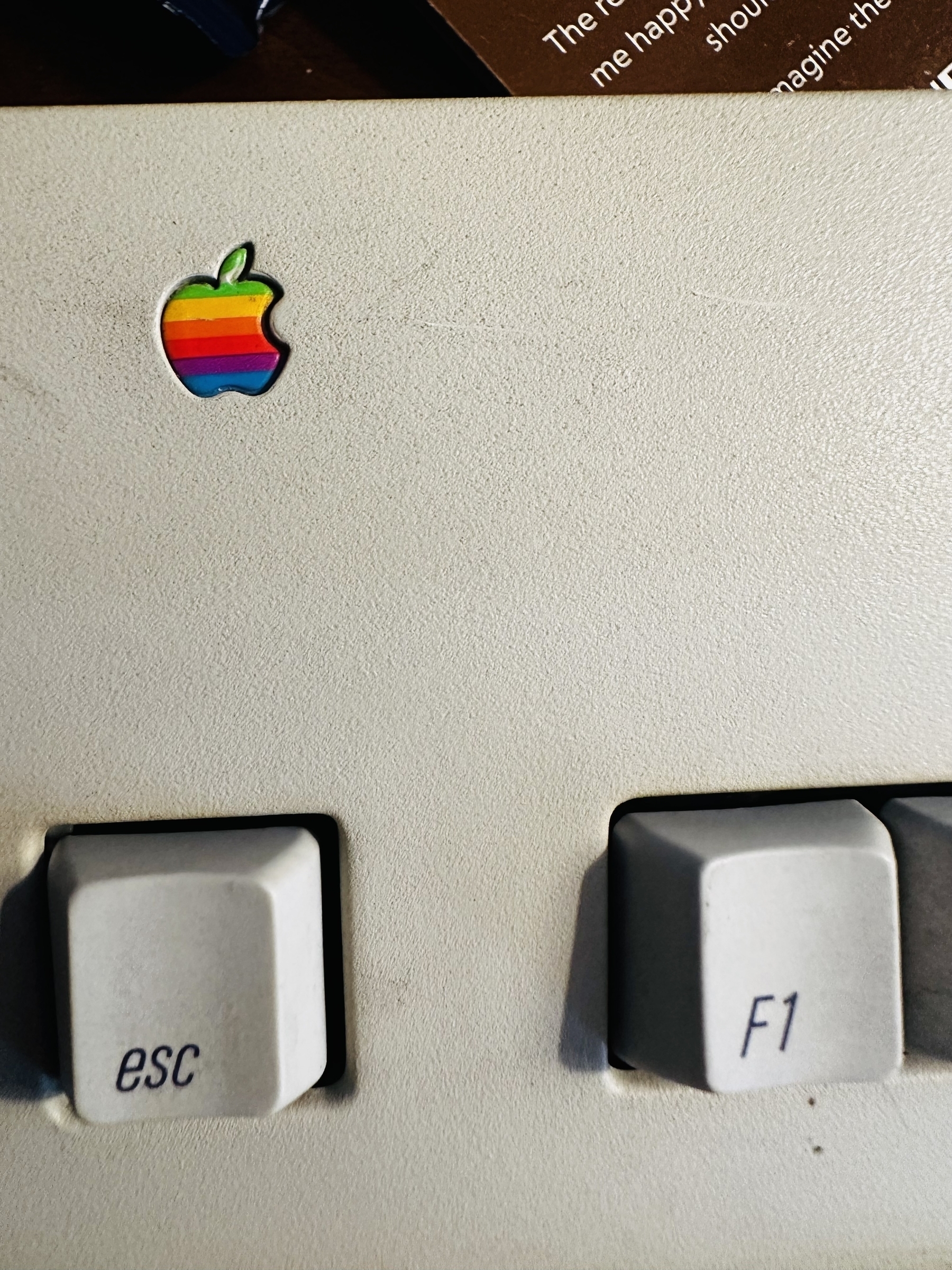
-
The bald truth about baldness cures
Death, taxes, and baldness—they all loom like anxiety-inducing storm clouds that (usually) aren’t as menacing as they seem, but nevertheless reliably inspire drastic solutions that are both risky and unrealistic. The stakes for curing male pattern baldness (MPB) 1 in particular are very low, but the afflicted have still been searching for a cure since literally ancient history.
Caesar and Hippocrates
Julius Caesar had gone almost completely bald by the time he met Cleopatra, who recommended to him a homemade topical solution that included icky ingredients such as bear grease. Like 99.9% of all such remedies throughout history, it didn’t work. To compensate, Caesar combed his hair forward and wore a wreath whenever possible.
George Bernard Shaw dramatized this situation in his play Caesar and Cleopatra:
CAESAR: What are you laughing at?
CLEOPATRA: You’re bald (beginning with a big B, and ending with a splutter).
CAESAR: (almost annoyed). Cleopatra! (He rises, for the convenience of Britannus, who puts the cuirass on him.)
CLEOPATRA: So that is why you wear the wreath—to hide it.
Going even further back, the Greek physician Hippocrates was famously bald, such that the hair that conventionally bald men don’t lose—i.e., the continuous patch around the back and sides of the scalp—is called the “Hippocratic wreath.”
But Hippocrates did realize something that even many people today don’t: That MPB is not skin-deep, and as such it can’t be completely solved through topical solutions like the Cleopatra concoction, because they don’t address its root cause, which is systemic and has to do with how testosterone moves through the body. 2
The (literal) root cause of MPB
Testosterone is constantly being converted to a more potent hormone called dihydrotestosterone, or DHT, by an enzyme called 5-alpha reductase (5AR). This sex steroid is vital for development. At the same time, it gets into hair follicles and, if those follicles on the top and front of the scalp are genetically susceptible to MPB, DHT shrinks them.
This process is called miniaturization. The hair follicle narrows, so that each time the hair sheds and grows back as part of the hair growth cycle, it grows back thinner, until it’s so thin it’s invisible to the naked eye.
So baldness isn’t the manifestation of hair falling out, but of hair failing to regrow at its previous thickness. People who aren’t bald have hair fall out every day, too, but it comes back at the same thickness, so there’s no cosmetic difference.
To halt or reverse MPB, any remedy must do one of the following:
- Inhibit T-to-DHT conversion
- Induce hair growth to such a degree that it outstrips the miniaturization process
Moreover, it must work on hair that’s still visible. Indeed, and ironically, the more hair you have, the better the results of any baldness remedy. Subtly miniaturized hair is the prime candidate for a turnaround story, whereas if someone is “shiny” bald, these drugs can’t help them—there needs to be some still-substantial hair remaining to actually save.
What does work, and why
Very few solutions—like, a single-digit number of them—meet those requirements. I’ll run through them now.
5AR inhibitors
There are two drugs in this class:
- Finasteride: Brand name Propecia (1mg, for MPB) or Proscar (5mg, for benign prostatic hyperplasia, or BPH 3)
- Dutasteride: Brand name Avodart, for BPH; not explicitly approved for MPB in the US, but is elsewhere
These drugs dramatically inhibit DHT conversion. Finasteride can reduce DHT levels in serum by over 70%, whereas dutasteride can reduce it by over 90%.
In practice this inhibition means they halt hair loss pretty quickly, but don’t always spur regrowth. And to truly save someone’s follices, a 5AR inhibitor must be taken indefinitely. 4
These drugs definitely work, but at what cost? If you do any amount of research on them, you’ll soon learn that physicians think side effects are “rare,” or that they’re most prevalent early on but subside with time. At the same time, there’s a constantly flowing stream of posts on the r/tressless subreddit as well as a similarly steady beat of research articles about how such effects—which are often both psychiatric and sexual—may be both persistent and significantly underreported relative to their actual occurence.
For that reason, there’s been a relatively recent push for topical finasteride, with the logic that if applied directly to the scalp rather than taken by mouth, it’ll have less systemic absorption and therefore fewer side effects. However, even topical variants do lower serum DHT somehow, so it’s unclear whether they’re truly safer, and they seem to be less effective than the systemic options.
Note that if you ever get a modern hair transplant, you may have to take a 5AR inhibitor to preserve the newly moved hair, even though it’s often assumed to be “permanent.”
Minoxidil
In the 1950s, the Upjohn Company began development of what it hoped would be a treatment for ulcers. That treatment, named minoxidil, didn’t work for that purpose, but it was a potent vasodilator and eventually found a niche in the late 1970s as the branded blood-pressure medication Loniten.
Patients taking Loniten noticed hypertrichosis, or rapid hair growth, and it wasn’t long before doctors began prescribing it off-label for MPB. In 1988, it was reformulated as a topical lotion under the brand name Rogaine. Over the next 30 years, Rogaine underwent multiple cycles of refinment, having its strength boosted from 2% to 5%, becoming an OTC medicine, being reformulated as a less-greasy foam, and becoming available as a store brand from basically every chain store that sells medicines of any kind.
Minoxidil preserves and stimulates hair growth in a different way than the 5AR inhibitors do. It’s less effective overall than they are, and it can usually only outrun aggressive MPB for a few years before losing the race. But when administered topically, it has no systemic side effects unless mixed at a double-digit active ingredient concentration, in which case it may cause hypotension. Like the 5AR inhibitors, it must be used indefinitely.
In 2022, The New York Times published an article on a trend that many in the hair loss treatment community had known about for years—taking minoxidil orally at very low doses, instead of applying it topically, because:
- As with 5AR inhibitors, the systemic route is more effective.
- There’s no grease or wetness to deal with in the hair.
The oral route is risky in ways the topical one isn’t, though:
- At such low doses (i.e., <1 mg), it needs to be compounded. Unfortunately, many pharmacists err when compounding, and the dose is too potent, leading to…
- …syncope, weight gain, and fluid retention, all of which are well-known minoxidil side effects that contributed to it being relgated to the less-used tiers of BP medicines long ago.
In brighter news, minoxidil offers a reliable remedy for women, who generally don’t respond to finasteride.
LLLT
Low-level laser (light) therapy (LLLT) is the process of shining a light, often a 650nm 5 red one, on an area of the body in hopes of stimulating growth or healing. For hair loss in particular, LLLT devices are designed as either combs or helmets used or worn 3-4 times weekly.
Their mechanism of action is different from the two treatment categories above, which mean that using LLLT in conjunction with 5AR inhibitors and minoxidil is likely to produce the most noticeable overall effects. Apparently, it helps stimulate cell growth and shifts hair into the anagen phase, when it’s still growing and not on the verge of being shed.
Hair grows in an anagen-katagen-telogen cycle. After a hair gets sheds in the telogen phase, it should then restart in the anagen phase. In MPB, it may cease to go back into this phase, or do so only at dramatically reduced width and length. LLLT and minoxidil both seem to reignite and extend the anagen phase.
Of all the treatments outlined here, this is the one that feels the most quack-ish to me. Lasers! To regrow your hair! But the evidence for its efficacy is substantial. It seems to be even more potent than minoxidil and not that far off from the 5ARs.
PRP
Platelet-rich plasma (PRP) injections involve someone taking a sample of your blood, spinning it through a centrifuge, and then reinjecting the ensuing protein-rich mixture into your body at a target site. The late Kobe Bryant was a pioneer of this treatment, albeit for his knee, not for his hair.
PRP can stimulate cell activity almost anywhere it’s applied, which makes it a popular cosmetic treatment. For hair, it seems to do something similar to LLLT and minoxidil, and it has a leg up on both of them when it comes to convenience—you only need two injections or so a year, instead of a daily or every-other-day regimen.
Herbal supplements and diet
Now we’re in a grayer zone, and nearer to Cleopatra’s “natural” solution. Many naturally-occuring compounds have been proposed as possible baldness cures. Some people even go so far as to say that diet can materially affect hair loss, a claim that doesn’t seem to hold up.
By far the herbal supplement most recommended for MPB is saw palmetto extract, a compound made from the berries of a dwarf palm tree. Hypothesized to work as a perhaps milder 5AR inhibitor without the grim side-effect profile, saw palmetto extract is backed by some evidence, but there’s not definitive proof that it works. Oddly, it seems to work better for MPB than for its more commonly associated use case, BPH.
The future
Baldness treatments can feel like the will o’ the wisp—always just over the horizon but impossible to reach. Hair multiplication, side-effect free topical or oral treatments, gene therapies and so on are always proposed but turn out to be ineffective in real life.
This topic has always interested me because of the diverse range of hair outcomes in my own family, from early onset shiny baldness to troubadour-esque hair into old age. I feel like there’s a lesson here in how despite immense demand and years of research, there still isn’t a foolproof permanent solution to hair loss—in fact Caesar’s own strategy of just wearing a wreath and doing a combover is still simpler, cheaper, and less side effect-prone that anything invented since.
-
Scientifically, this condition is known as androgenic (or androgenetic) alopecia. ↩︎
-
Hippocrates noticed this because he saw that eunuchs didn’t go bald. ↩︎
-
It works for both conditions because they’re both caused by the effects of DHT. ↩︎
-
This requirement reminds me of the recent weight-loss medications Wegovy and Ozempic, which similarly lose all benefit the moment they’re ceased. ↩︎
-
This is the same wavelength used in CD and DVD players. They’re “optical” discs because they’re read by lasers. ↩︎
-
The state bird of Illinois (and six other states) keeping watch over someone’s Amazon package

-
Weird DVD facts:
- They don’t have square pixels, and the pixels have different non-square shapes for NTSC and PAL regions.
- All video is 480i on disc but can be re-interleaved to 480p if progressive scan flags exist.
- They don’t run at 24 frames per second for movies (they use 3:2 pull-down).
-
She likes this toy from 🇯🇵

-
Thirsty 🐈 I thought of this segment from Tennyson’s The Lady of Shalott:
She lives with little joy or fear.
Over the water, running near,
The sheepbell tinkles in her ear.
Before her hangs a mirror clear
